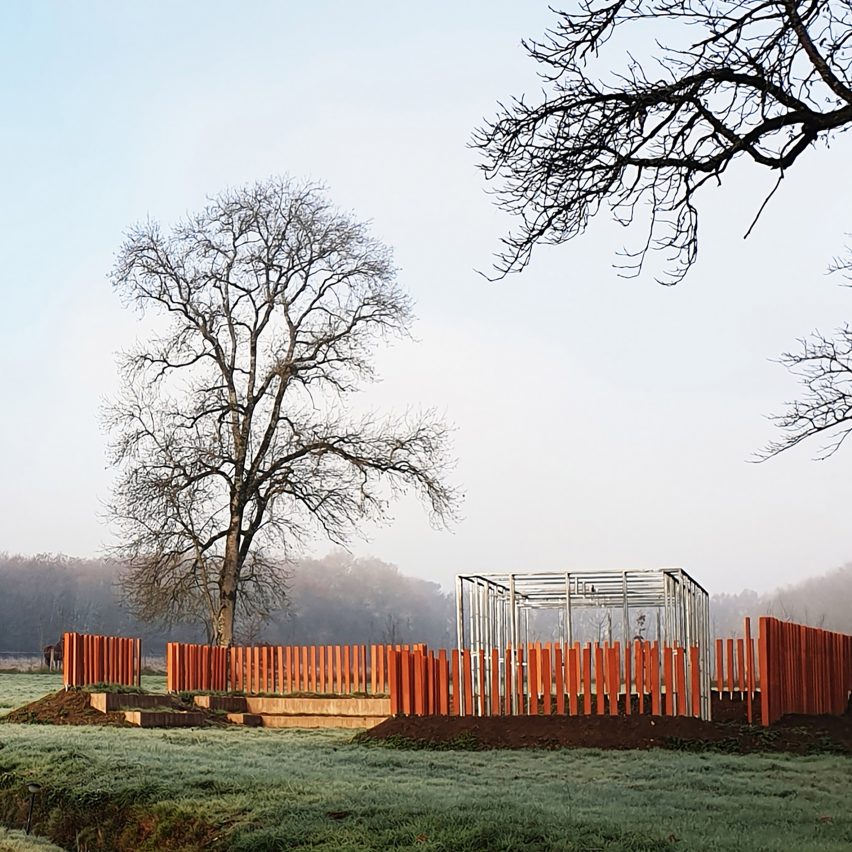
In our latest school show, undergraduate and postgraduate students at The Design Village in India present architecture and design projects ranging from a shelter for cats to an algorithmic learning aid for people with dyslexia.
Other projects include a music festival that aims to bring the sighted and visually impaired people together, and an analysis of the impact of menstrual euphemisms in India. The projects aim to explore how informed processes are vital to developing solutions to solve today’s problems.
The Design Village
School: The Design Village
Courses: Fashion and Textile Design, Product Design, Graphics and Communication Design, Space and Interior Design, Transportation and Mobility Design, Interaction and UX Design, International Practice in Habitat Design, Practice of Design
School statement:
“The Design Village is a multidisciplinary design institute based in National Capital Territory, India. The institute believes in impact through design as a medium that can solve the problems of today and propose solutions for the future.
“Much like an actual village, The Design Village is an organic whole where culture is rediscovered and values of empathy are nurtured by supporting fellow villagers and The Design Village itself. It aspires to be an energetic and thoughtful place where designers want to be and teachers want to teach.
“The Design Village’s 2nd graduate show unveils projects that tinker with the ideology of design as a verb. They earmark concurrent contexts and envision solutions for a better future through rigorous, informed and mindful processes.”
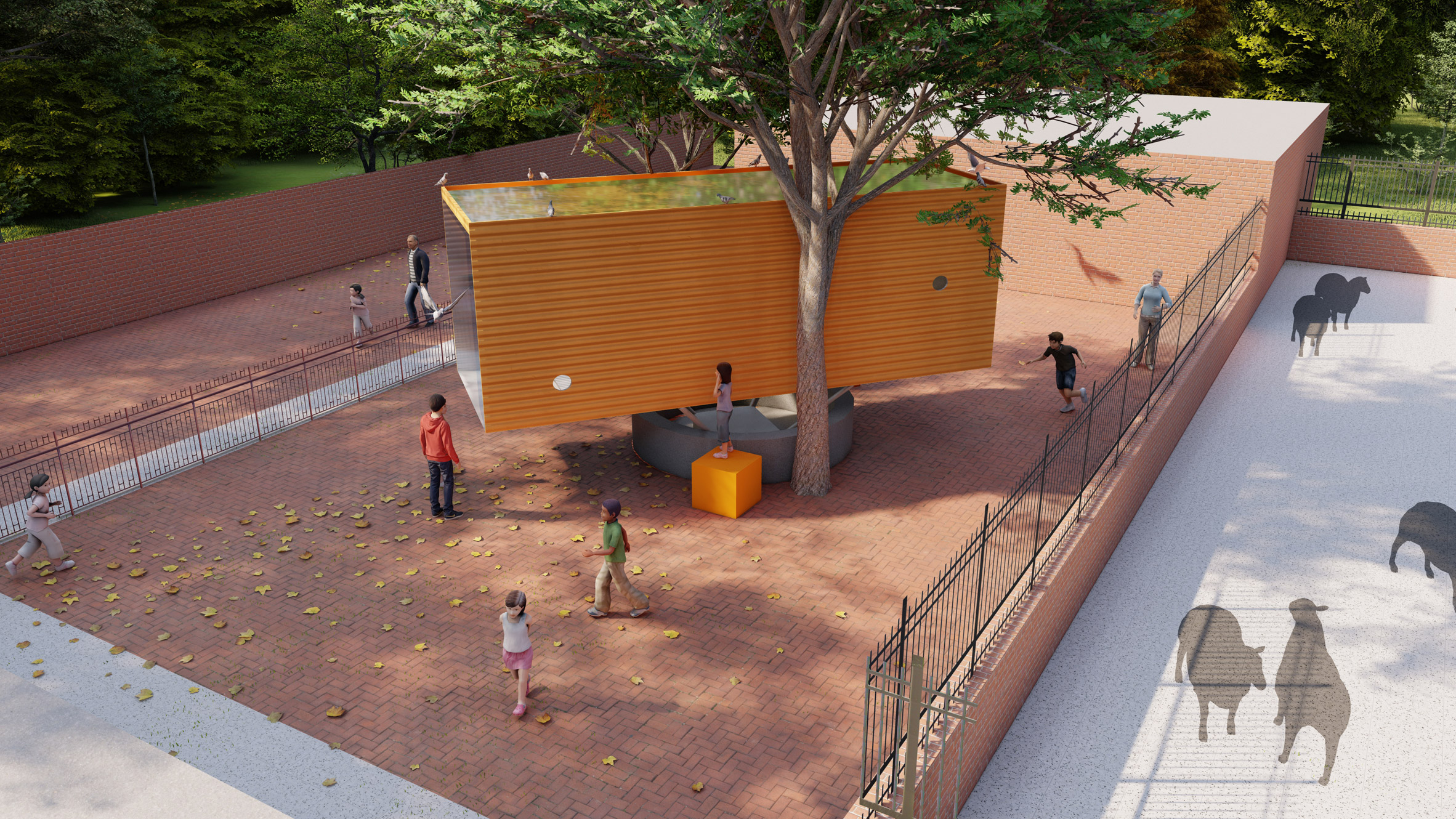
People for Animals (group project)
“In collaboration with Studio Archohm, a student group designed an environment for neglected cats that rejuvenates them through space and design. The concept is for The People for Animal Shelter – an animal welfare centre in the National Capital Region of India.
“Keeping the behaviours of cats as a foundation and eliminating any possible stressors, the students created an oasis to address their various needs and create a micro-climate. Apart from being both a home and playpen for cats, the design allows birds to rest and drink water on the roof.”
Students: Shireen Saxena, Tarushee Sachdeva and Syed Javeed Badri
Professors: Sourabh Gupta, Rishabh Soni and Mohan Kumar Verma
Email: shireen_pg20@thedesignvillage.org, tarushee.sachdeva_pg20@thedesignvillage.org, syed.badri_pg20@thedesignvillage.org
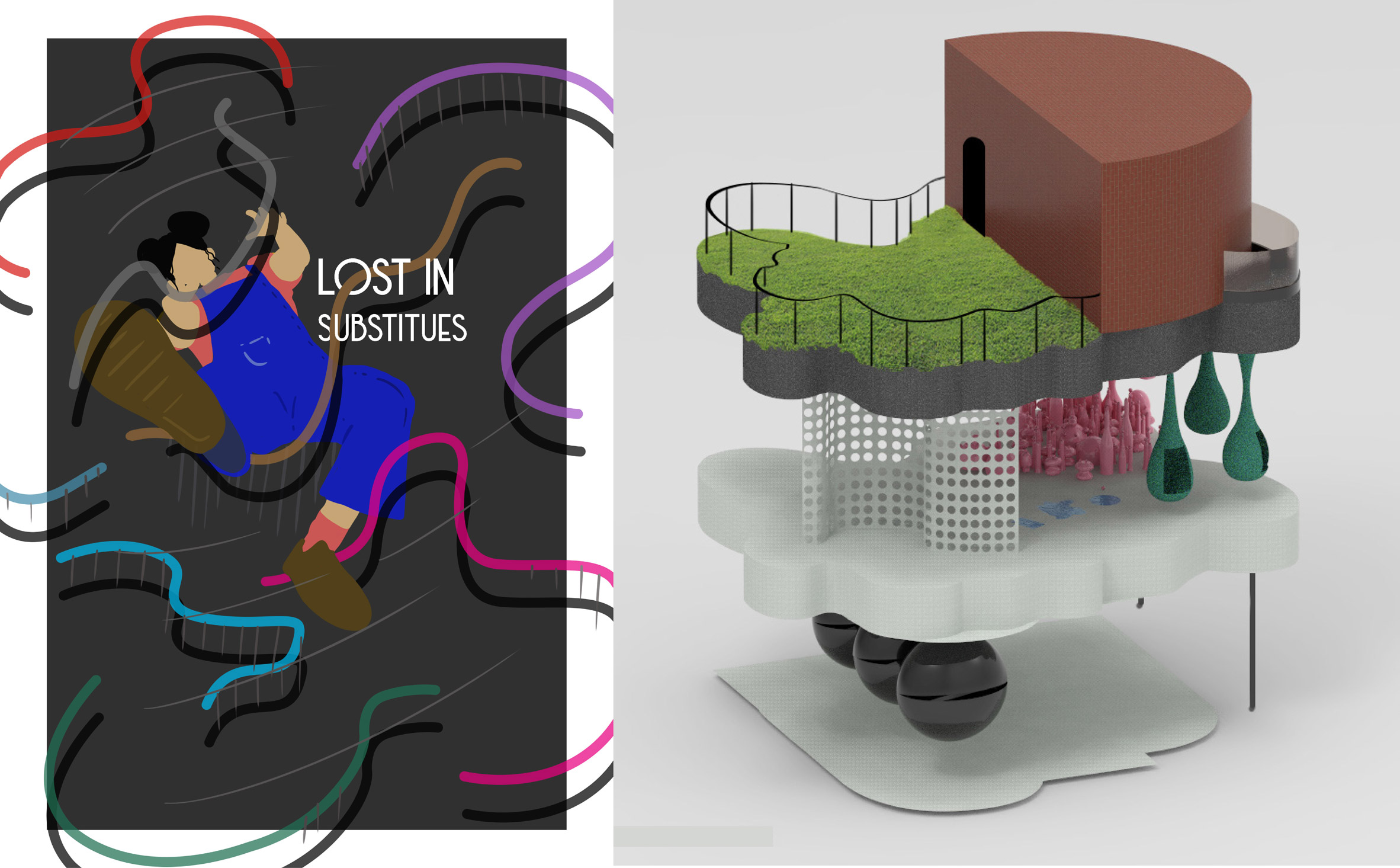
Lost in substitutes by Namoshree Jain
“Lost in substitutes asks: are we really experiencing the world in this era of digital compression? As we meander in a world of e-books, digital games and video, Namoshree has created an experience providing sensory inputs in varying intensities from minimum to excess.
“In a post-pandemic world, we have all arrived at the painful realization that we miss sensory inputs such as touch. As we hope to increase interactions with people, Namoshree has designed a safe experience that caters to our physical and mental well-being.”
Student: Namoshree Jain
Professor: Tuttu M. Thomas
Email: namoshree.j@thedesignvillage.org
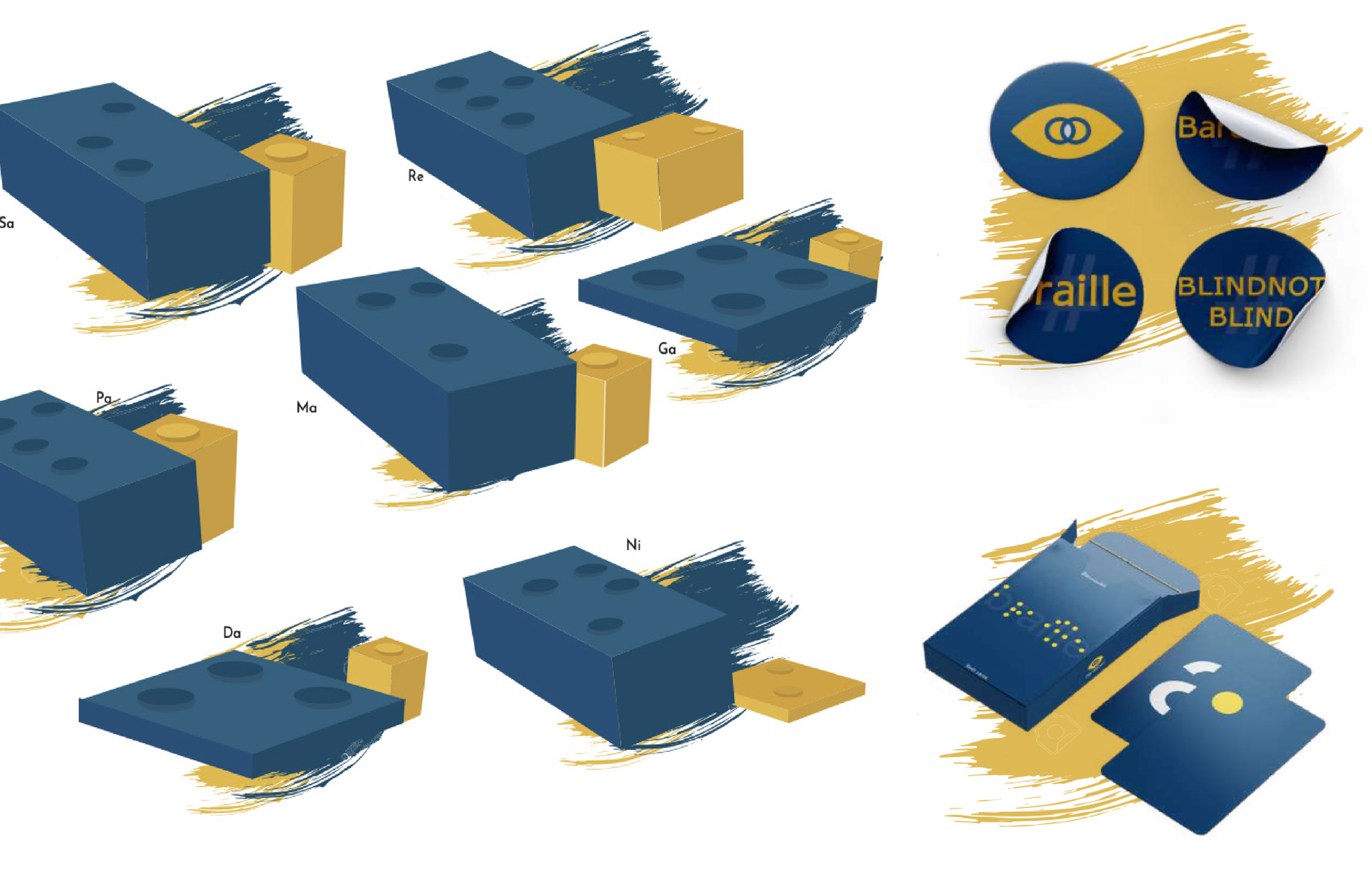
Baraabari – Bringing the blind and sighted together by Vidita Maheshka
“Baraabari roughly translates to ‘parity’ in English.
“Through her project, Vidita Mahesheka has created a shared platform for the sighted and individuals with vision impairments. Working with the National Association for the Blind and Music Basti, a music school, she proposed a music festival as a site for inclusivity.
“Aiming to address social exclusion and awkwardness (often experienced by the people with low or no vision) Vidita emphasizes auditory input rather than visual, creating a site for parity and increasing social interaction between the sighted and people with vision impairments.”
Student: Vidita Mahesheka.
Professor: Pritesh Maru
Email: vidita.m@thedesignvillage.org
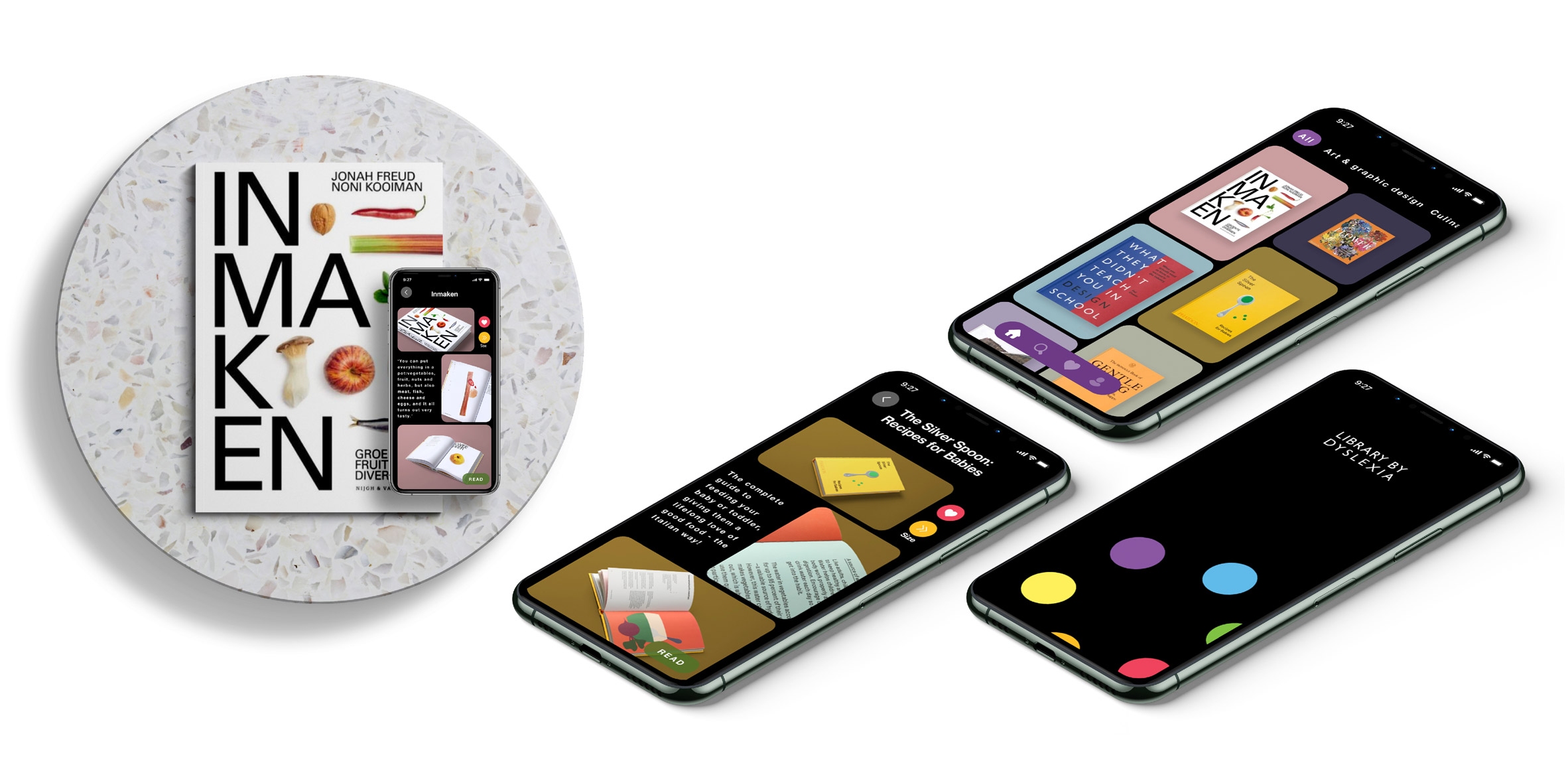
I am dyslexia – Words no longer the limitation by Kiran H. Nath
“Growing up neuroatypical, Kiran H. Nath struggled with the education system. Kiran believes that it designs people like him out of the learning paradigm, forcing students to conform to distinct ways of learning. As a result, children and young adults often lose confidence.
“Kiran’s project addresses this issue. He has designed an algorithmic application that responds to its users’ learning abilities. Mapping the prowess of a dyslexic mind, Kiran worked with the Madras Dyslexia Association and designed a product to enhance and celebrate abilities rather than focusing on perceived disabilities.”
Student: Kiran H. Nath
Professor: Mudita Pasari
Email: kiran@thedesignvillage.org
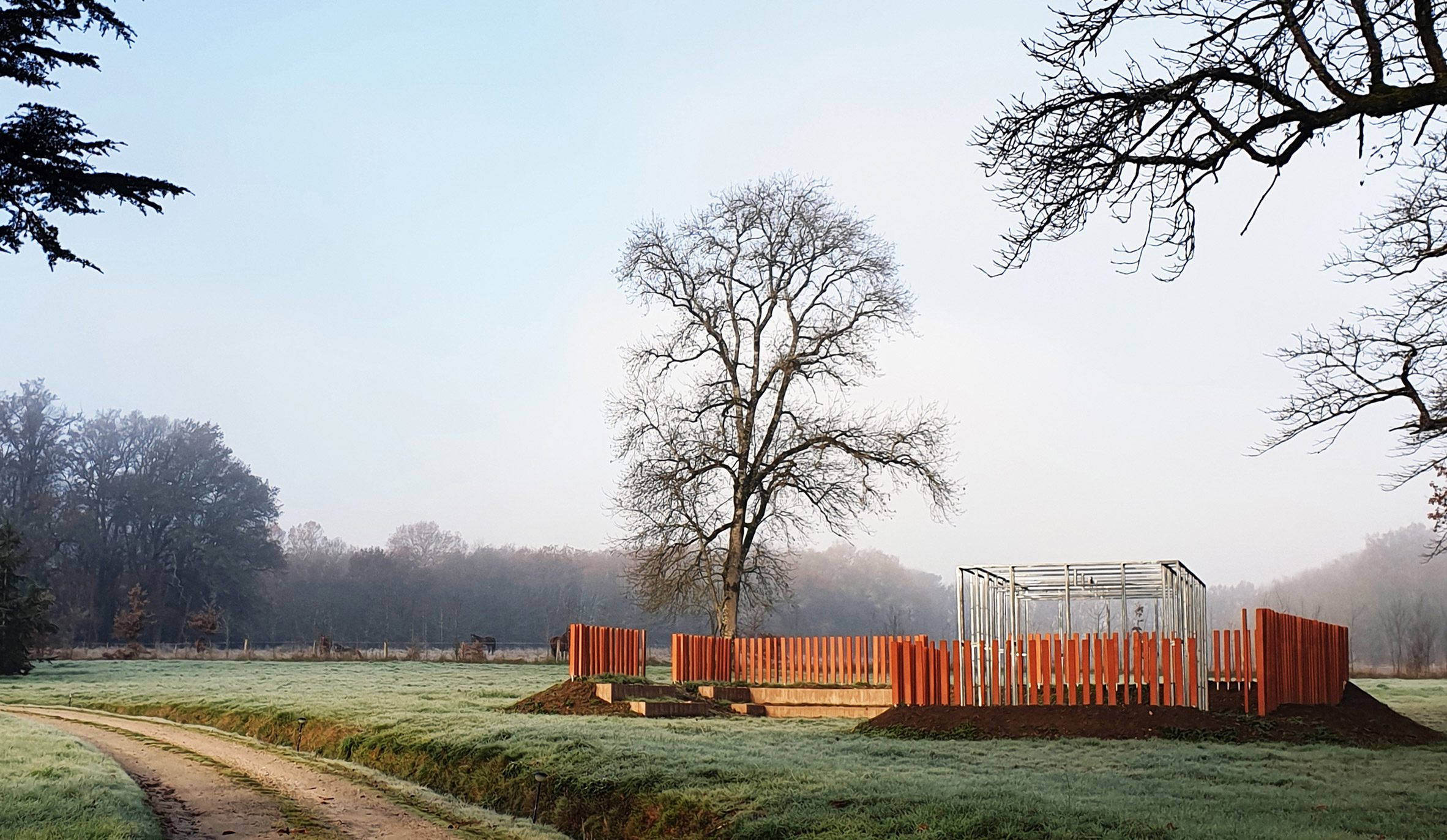
India Pavilion – A symbol of cultural exchange (group project)
“Over a series of workshops from across the globe, the India Pavilion was built at Domaine de Boisbuchet, Lessac, France, in 2019. It celebrates the union of space, material and light to create architectural experiences representing Indian civilization.
“The pavilion attempts to create a collective public space, allowing visitors to interpret the building as an ‘agora’ in dialogue with nature. It testifies to the importance of cultural exchange and symbolizes the necessity of views from the outside to readjust and revitalize Indian values.”
Students: Zoya Gupta, Anoop Kumar Vinod Kumar, Arjun Gupta, Arshad Bajil Kuttasseri, Mukul Kapoor, Akarsh Goyal, Albert Shawn Figaredo, Ikshita Sharma, Sachin Choyal, Namoshree Jain, Souvik Mukherjee, Dharini Singh, Rishabh Soni, Anjana Sravya Yalamanchili, Abhirami Ravi, Vidita Maheshka, Yash Mishra, Saiyam Arora, Ushmita Aggarwal, Arushi Khatri, Vanshika Mehta, Sarthak Tayla, Khadija Rajgarhwala, Purva, Abad Ali, Harsh Chauhan, Akanksha A. Thapa, Sanjana Suri, Ankita Kochhar, Pranav Shyam Kalambi, Vineet Rao, Mayank Gupta, Maulik Yagnik, Snighdha Gupta and Tanvi Aggarwal
Professors: Sourabh Gupta, Mridu Sahai, Lena R. Gupta, Carlos Guisasola, Pablo Sevilla Alonso, Gopendra Pratap Singh, Vidur Madhav, Vatsal Agrawal and Mohan Kumar Verma
Email: taskbox@thedesignvillage.org
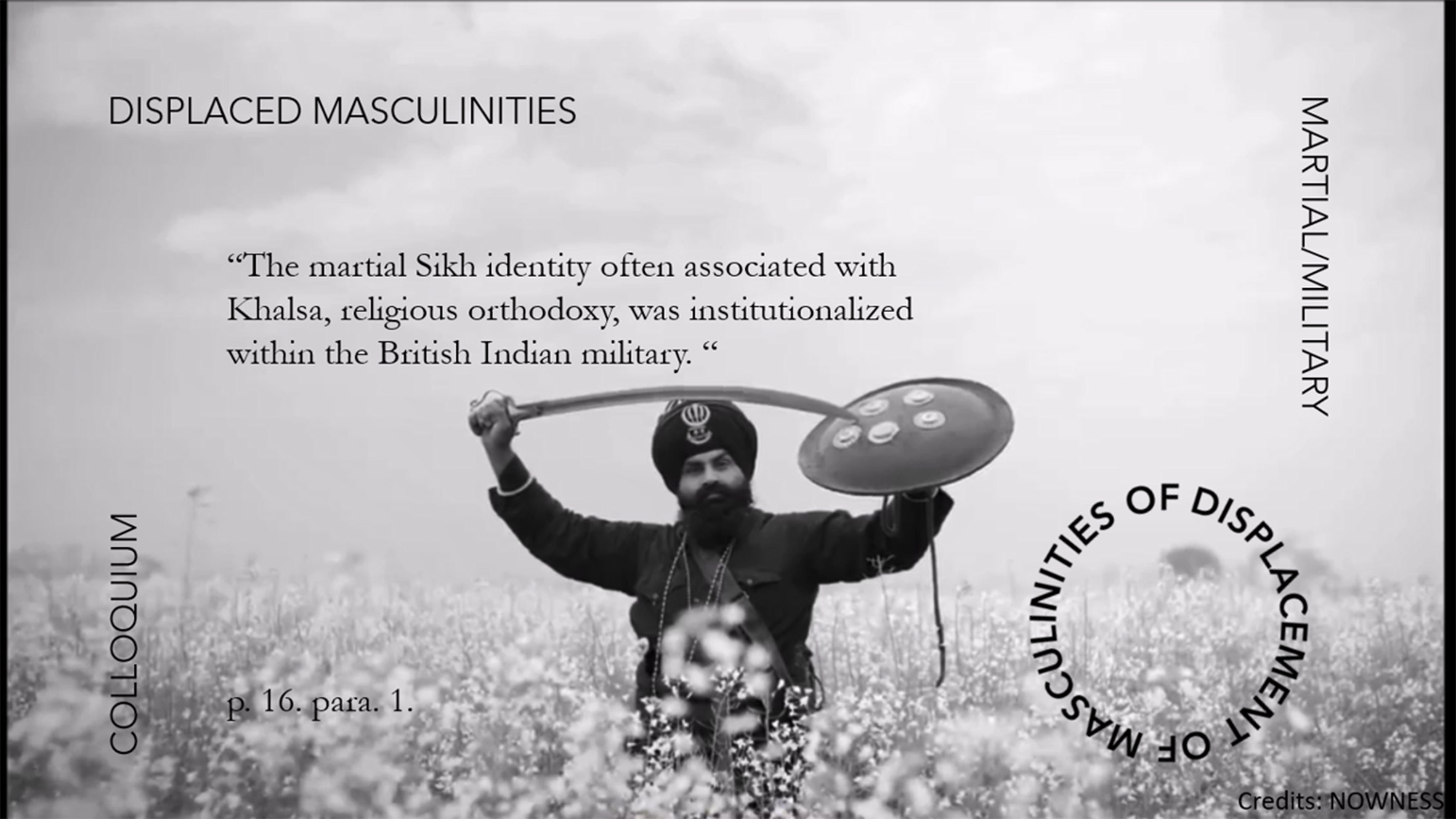
Displaced Masculinities – The men in contemporary Punjab by Archit Dhiman
“Archit Dhiman, a non-Sikh Punjabi male, examines the underlying themes and patterns that impact the notions of ‘masculinity’ within contemporary Punjab in India.
“Applying a framework using an intersection of various fields, Archit has developed a multi-dimensional analysis from analysing Punjabi regional cinema. Archit has also referenced scholarly work from global ethnographers and anthropologists.
“The paper aimed to render a collage of imagery that impacts the notions of masculinity in Punjab. Moving away from stereotypical definitions, the paper superimposes the images of masculinity and femininity on societal, national and global premises.”
Student: Archit Dhiman
Professor: Vatsal Agrawal
Email: archit@thedesignvillage.org
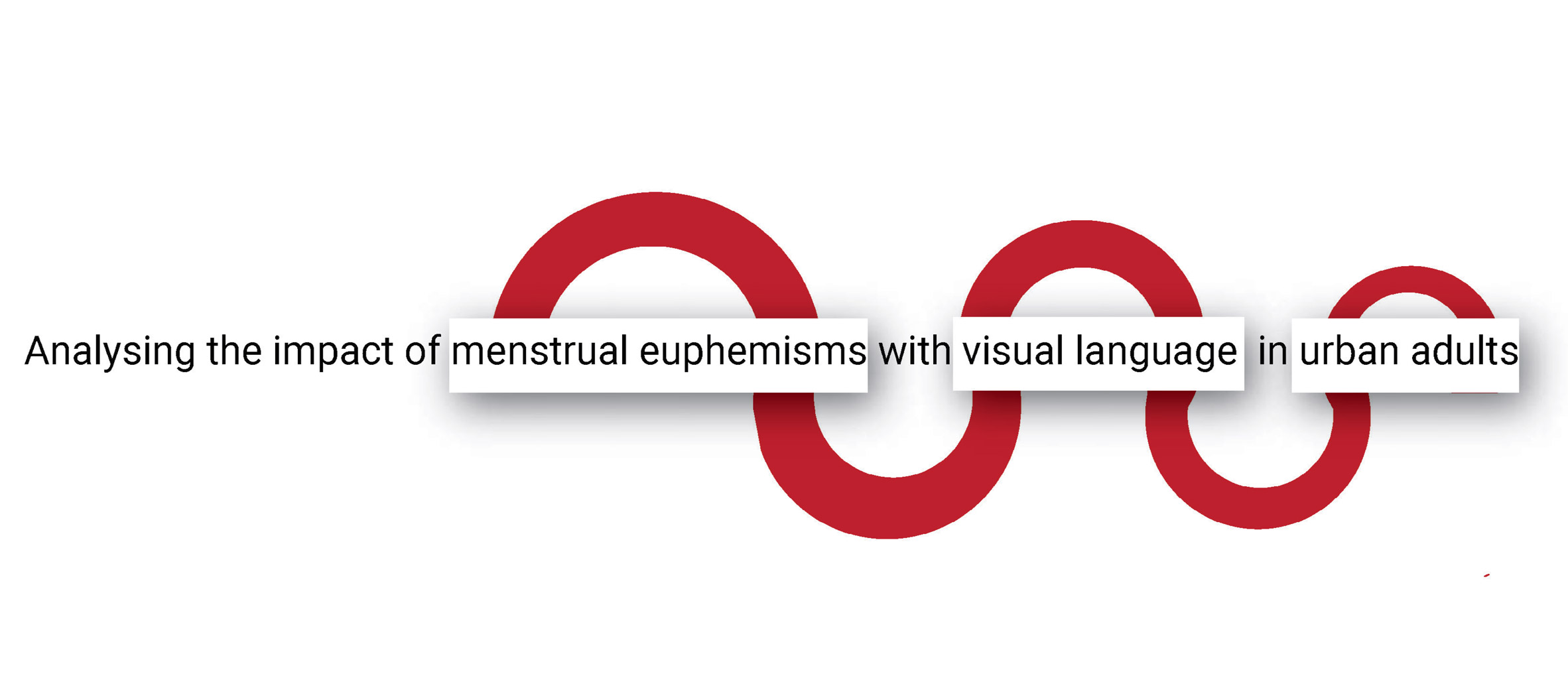
Analysing the impact of menstrual euphemisms with visual language in urban adults by Unnati Sharm
“Through her master’s dissertation, Unnati Sharma tackles euphemisms used for menstruation in urban India. Despite claims of modernity, most of India still refrains from having this conversation, resulting in countrywide problems of menstrual hygiene and an apparent lag in SDG indicators for health and well-being.
“Unnati argues that there is an urgent need to normalize and address the many associations people have with menstruation. This need to understand menstruation (beyond its scientific meaning) could be addressed by using visual euphemisms as a tool – allowing more open conversations between the menstruating and non-menstruating populations.”
Student: Unnati Sharm
Professor: Prachi Joshi, Sneha Ravishankar and Lena R. Gupta
Email: tdvunnati@thedesignvillage.org
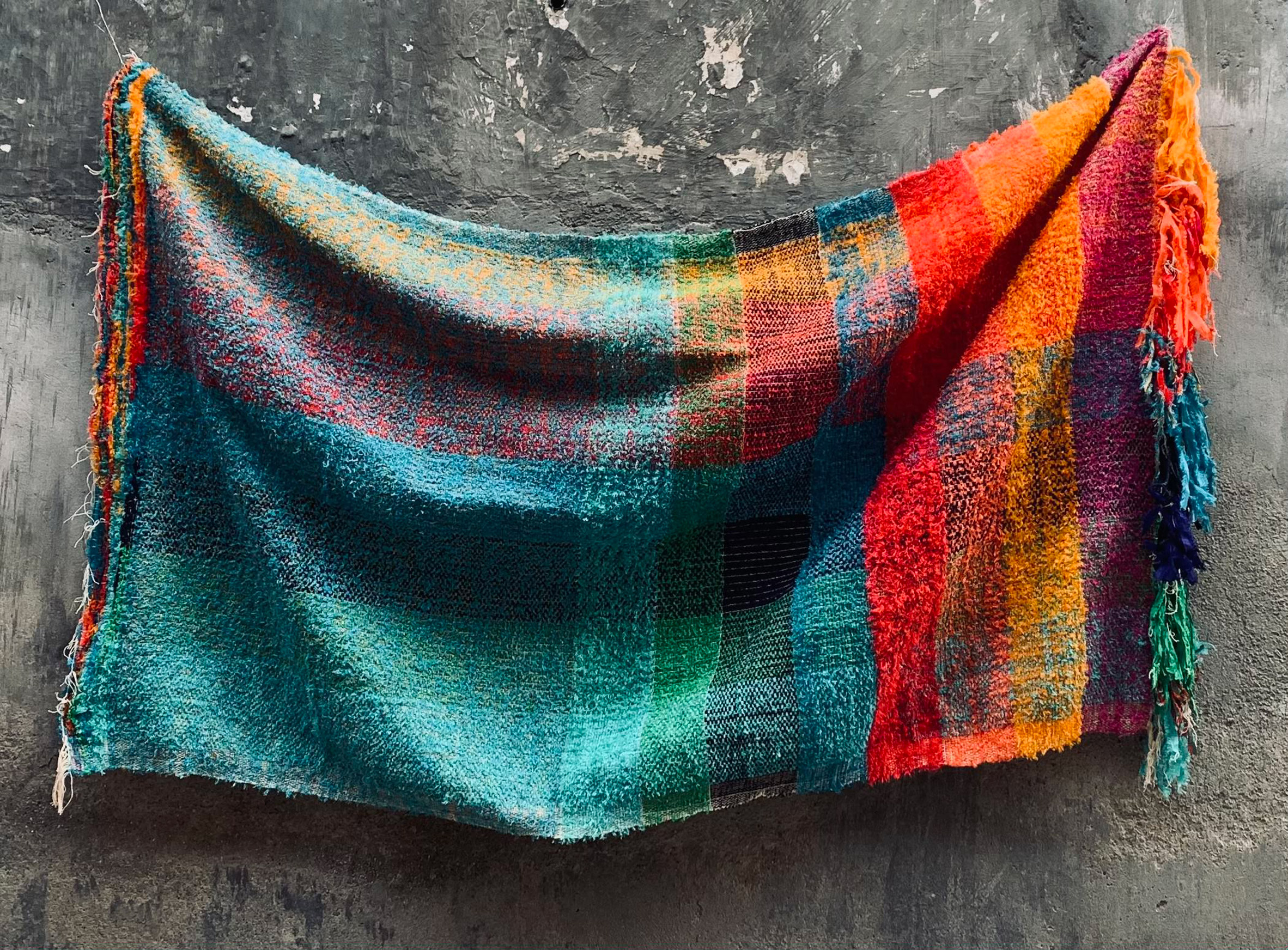
Craft sustainability with special reference to chindi rope in villages of Haryana by Sachin Choyal
“Sachin Choyal’s master’s dissertation explored sustainable mapping practices using pre and post-consumer textile waste within rural communities of Haryana, India, which has developed into a study of sustainability itself.
“Examining creating rope from waste fabric, Sachin mapped the processes and cost structures, helping create a sustainable business model for local communities (who usually create products for local consumption). Since the project’s completion, Sachin has developed an unusual weaving technique to produce fabric for rugs, throws and jackets.”
Student: Sachin Choyal
Professor: Mudita Pasari and Lena R. Gupta
Email: tdvsachin@thedesignvillage.org
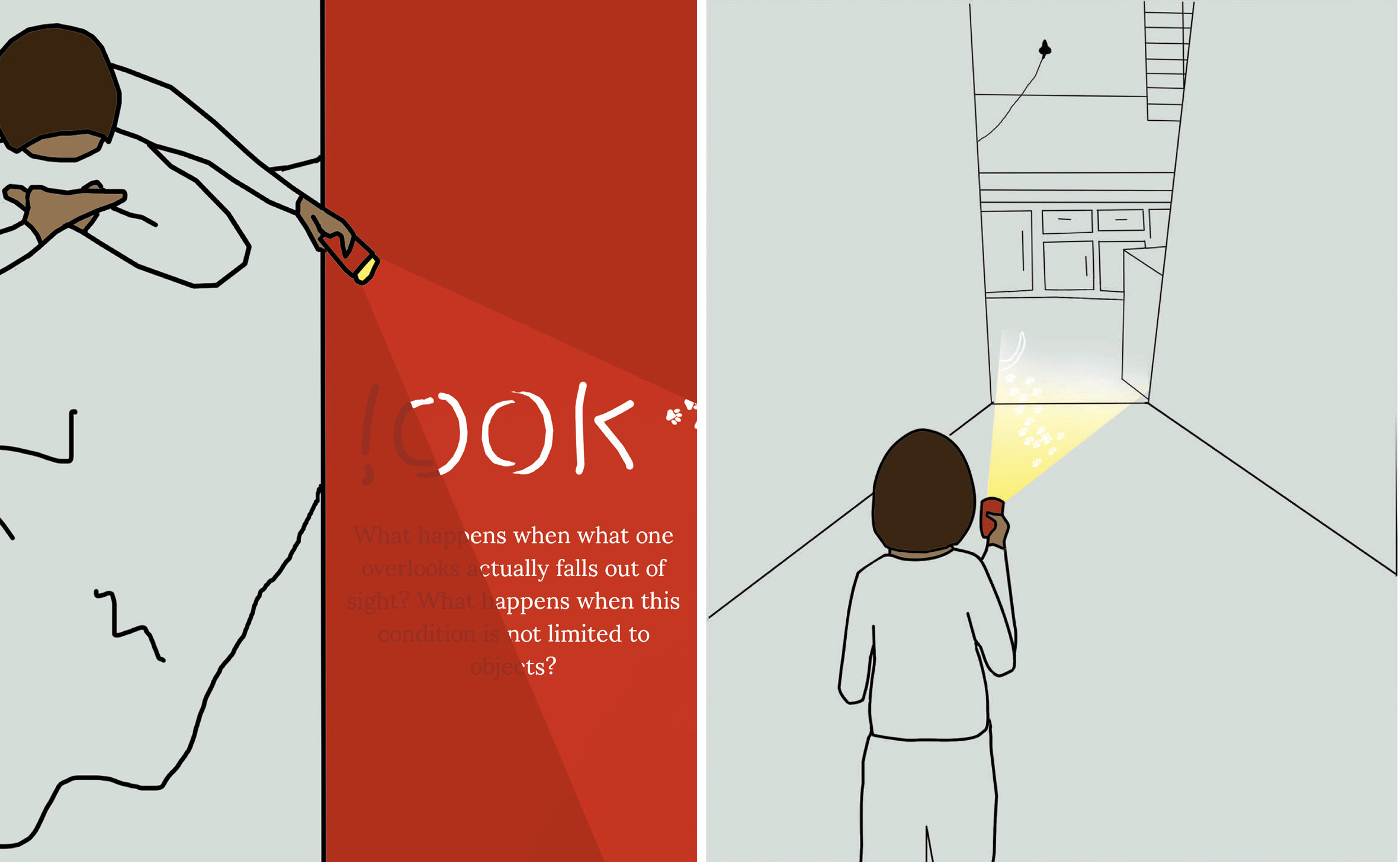
!ook a wordless visual storybook by Ananya Joshi
“In collaboration with non-profit education organisation Khel Planet, Ananya Joshi has designed a book emphasising the art of looking. The project asks us to shine a light on objects and beings we overlook – to see, acknowledge and engage with them.
“Ananya’s wordless book is designed for 6-10-year-olds and their caregivers. It aims to encourage readers to build positive relationships, improve language expression, exercise vocabulary and explore plot lines. Not having a singular storyline allows the readers to direct the story while creating a space to question and ponder upon illustrated cues.”
Student: Ananya Joshi
Professor: Sneha Ravishankar
Email: tdvananya@thedesignvillage.org
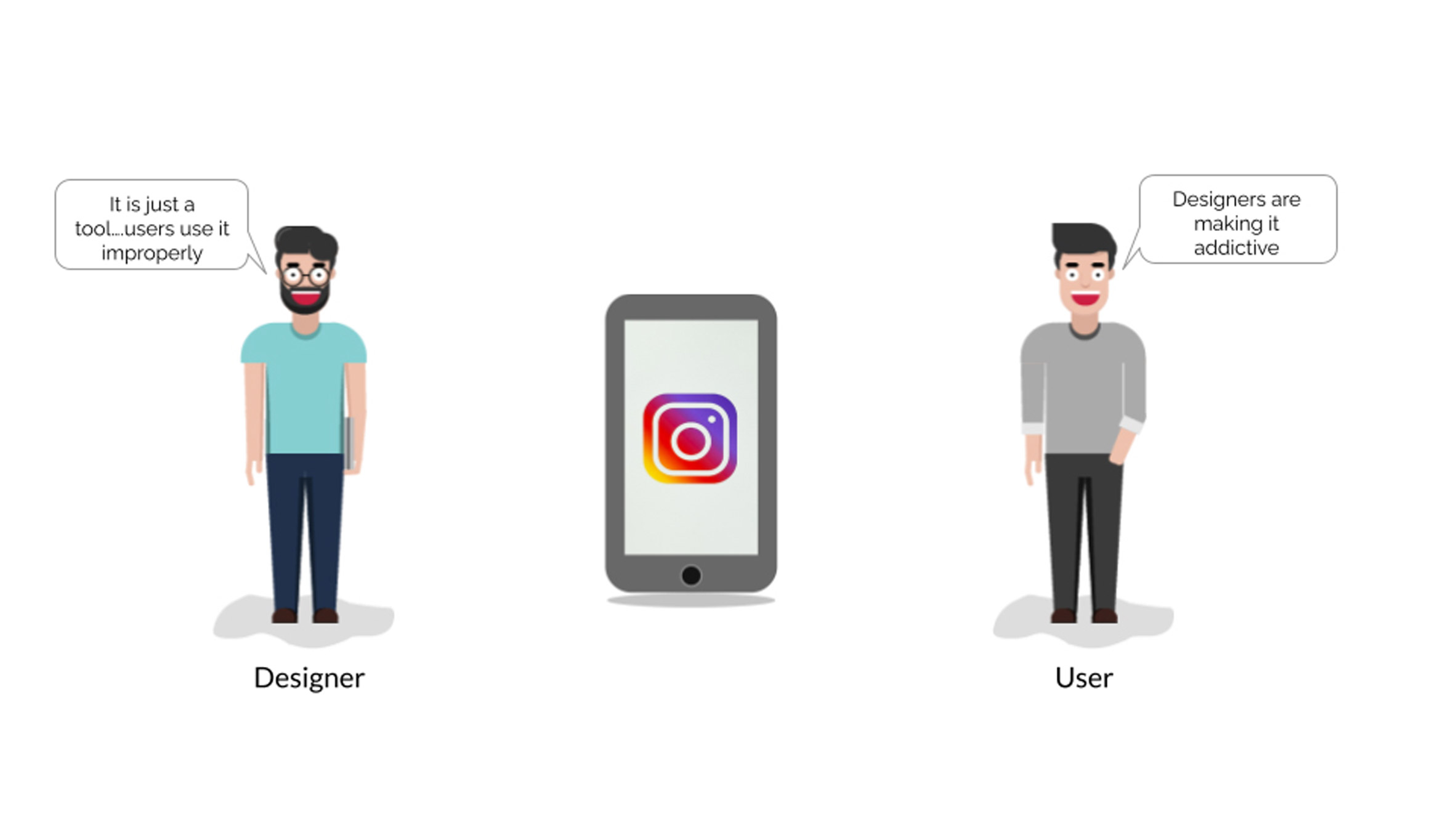
The possibility of an objective ethical framework in Persuasive design: A theoretical reflection by Karan Pal Singh Virdi
“Persuasive technologies aim at changing the behaviour and attitude of users. Karan Pal Singh Virdi addresses the ethical concerns with such technological interventions by designers, as it is suggested that many academic ethical frameworks lack a designer’s perspective.
“This study contributes to this missing link by investigating a possibility of an objective ethical framework— guiding unbiased decisions and adapting to dynamic factors that contribute to ethical dilemmas.
“The suggested methodology is two-phased, inspired by a five-stage design process. First phase involving scrutiny of existing frameworks and the second phase involving practical applications of the same.”
Student: Karan Pal Singh Virdi
Professors: Muskaan Mahendru, Sunidhi Chaudhary, Hitesh Chikarsal and Vanshika Mehta
Email: tdvkaranpal@thedesignvillage.org

Meghalayan tales – stories from the magical land of Meghalaya (group project)
“A group of students working with the Meghalaya Infrastructure Development and Finance Corporation propose ideas of enhancing sustainable tourism in the northeastern state of Meghalaya, India.
“The students observed a stark disconnect between the tourists and the aboriginal tribal population. To bridge this gap, they suggested carrying local myths, stories and legends to the tourists before, during and after their visit to Meghalaya.
“Their proposal included visual aids, graphic books, theatrical and immersive displays, which allowed for the tourist to be immersed in and interact with local cultural aspects of Meghalaya.”
Students: Muskaan Mahendru, Sunidhi Chaudhary, Hitesh Chikarsal and Vanshika Mehta
Professor: Anusha Dhawan
Emails: sunidhi@thedesignvillage.org, muskaan@thedesignvillage.org, vanshika@thedesignvillage.org, hitesh@thedesignvillage.org
Partnership content
This school show is a partnership between Dezeen and The Design Village. Find out more about Dezeen partnership content here.
The post The Design Village spotlights 11 student architecture and design projects appeared first on Dezeen.
